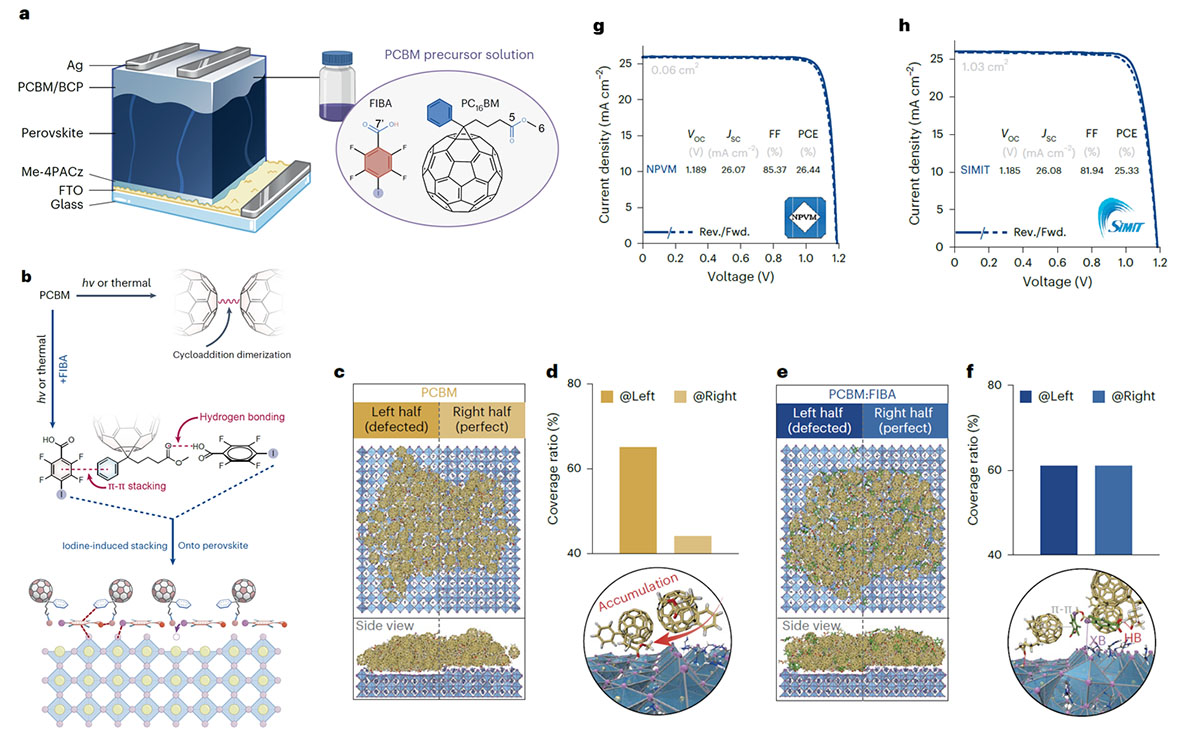
A team led by Prof. PAN Xu at the Institute of Solid State Physics in Hefei reports a significant step forward for inverted perovskite solar cells. By reworking the electron transport layer, the researchers improved the devices' efficiency and durability, a result that appears in Nature Materials (“Suppression of PCBM dimer formation in inverted perovskite solar cells”).
Perovskite solar cells already approach power conversion efficiencies near 27 percent, making them strong candidates for next generation photovoltaics. The same group previously introduced a method to even out the cation distribution in the perovskite absorber layer. They now turned their attention to the transport layers that move electrical charges, which are equally important for performance.
One common electron transport material, PCBM, suffers from a flaw. Under light and heat, its molecules tend to pair up as dimers, a reaction that slows charge movement, lowers efficiency and accelerates aging. This issue stands in the way of reliable commercial devices.
The team examined how PCBM molecules stack on different perovskite surface terminations and found that inconsistent molecular orientation encourages dimer formation. Their solution was to design an additive called 2,3,5,6-tetrafluoro-4-iodobenzoic acid, or FIBA. The additive interacts with PCBM and directs the molecules into a more uniform arrangement on the perovskite surface. This ordered structure blocks the geometric conditions needed for the unwanted pairing reaction, preventing dimers from forming.
The results were striking. Devices reached 26.6 percent efficiency in small test cells, 25.3 percent in one square centimeter cells and 21.3 percent in large modules. They also held more than 85 percent of their initial efficiency after two thousand hours of continuous heat, humidity and light exposure.
The study offers a practical route to raise both the efficiency and stability of perovskite solar cells, strengthening their prospects for real world use.
